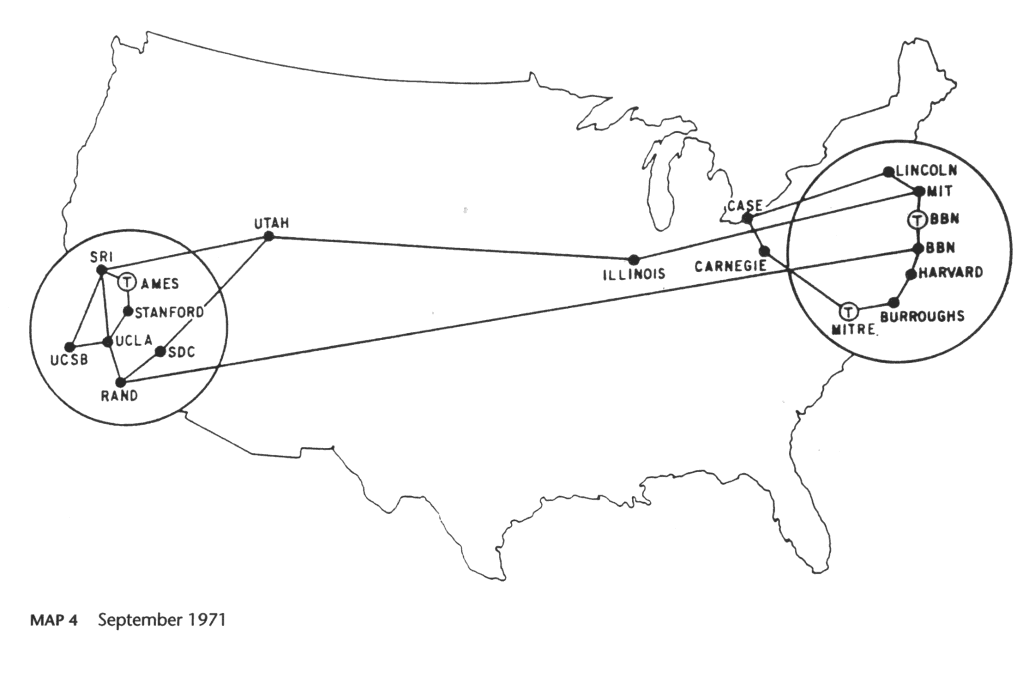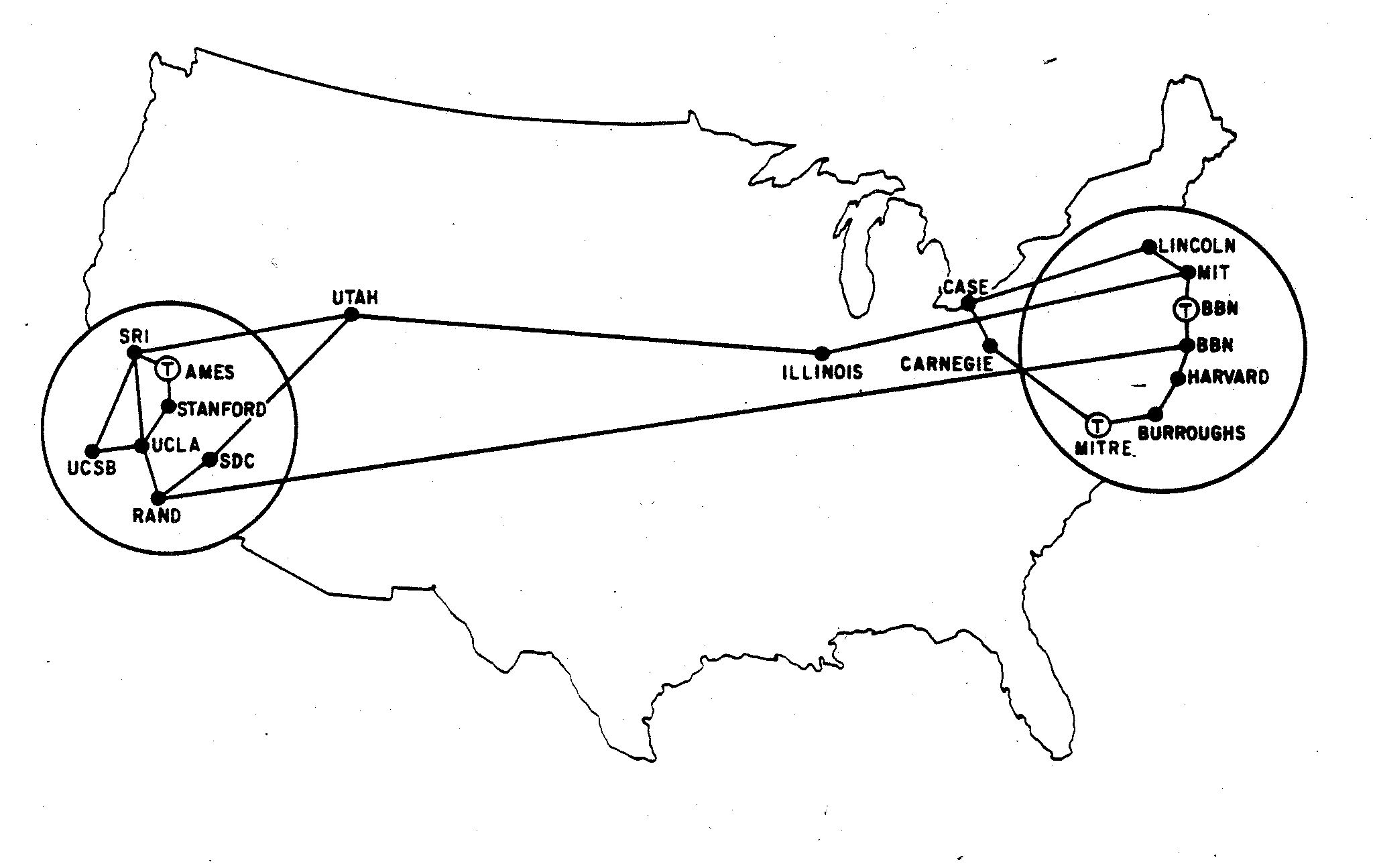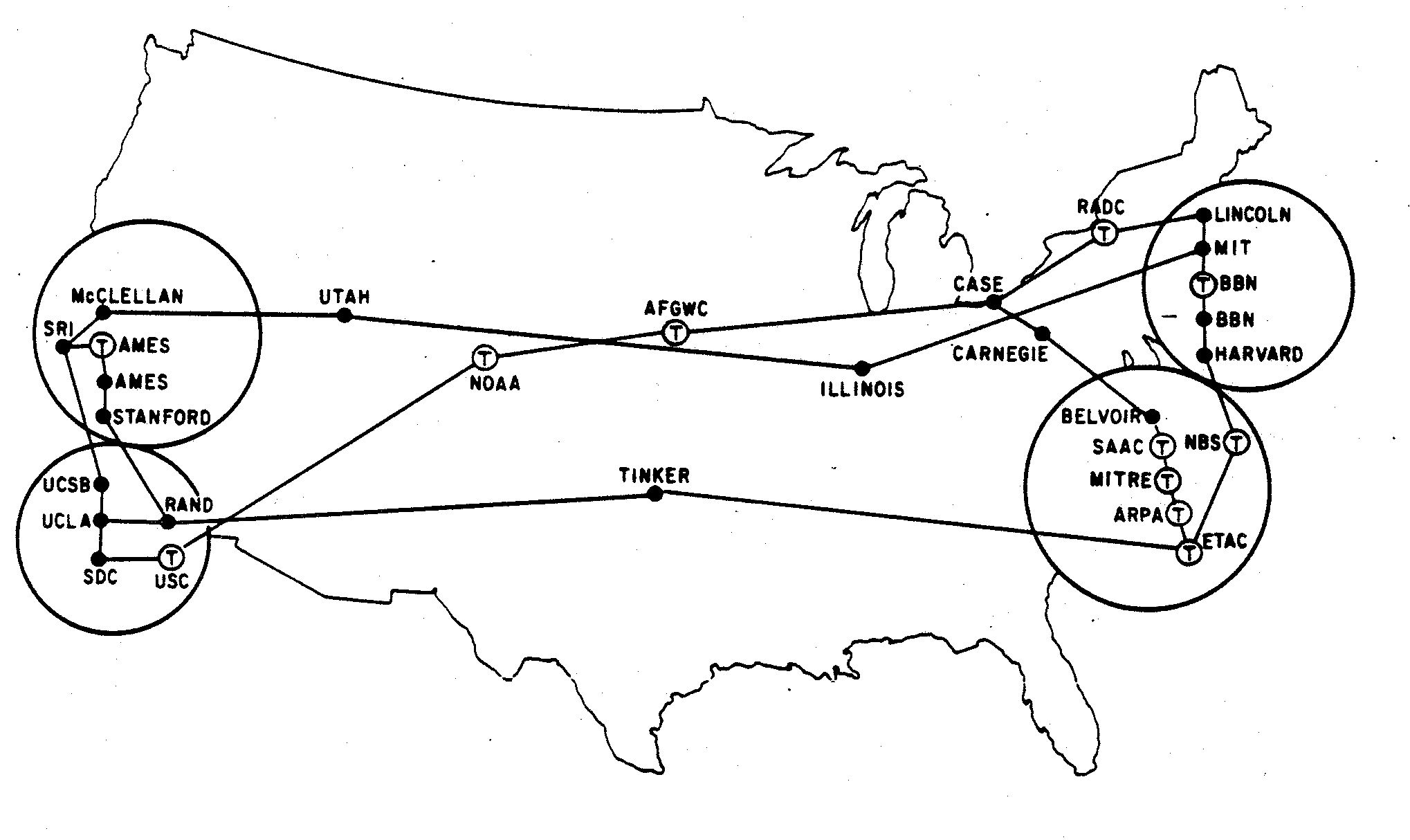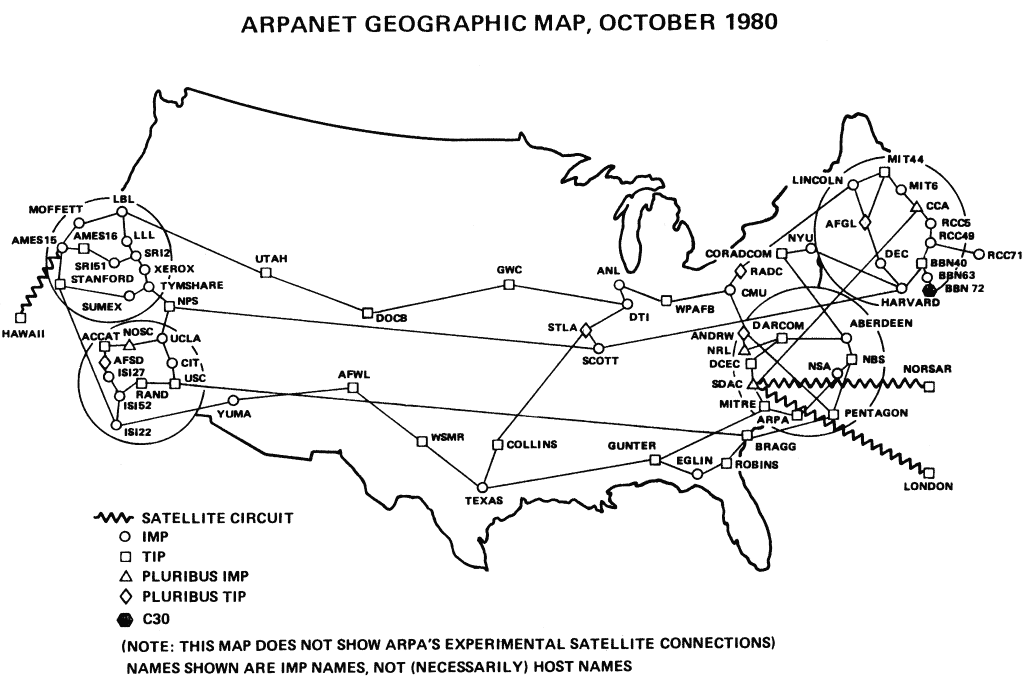Global Network is 45 years old. How it all began

Although it would be more accurate to say that 45 years old was a successful communication session between two computers. The distance between these computers was 640 kilometers (just as much from the University of California, Los Angeles to Stanford Research Institute).
Communication session was successfully established on October 29, 1969, at 21:00. In the process of data exchange, the creators of the system managed to successfully transmit three characters - LOG, after which a familiar thing happened and now many of us are in trouble - the connection was broken. Repeated connection was established already at 22:40. Both computers used in the system during data transfer were the first communication nodes of the future ARPANET network.
')
And now it was just a system consisting of two communication nodes. Two months later, by December 1969, there were already 4 communication centers in the system. In 1970, the new network had its first network node, which was located in Cambridge.

Nodes for June 1970

Network Configuration for December 1970

September 1971

March 1972

August 1972
In 1972 - 37 knots. By the way, the @ icon appeared in 1972, defining the further structure of the e-mail address. Due to the possibility of remote data transmission, the difficult task of transferring information from one PC to another was solved. It was a difficult operation, for a number of reasons, one of which was the incompatibility of computers.

September 1973
In 1973, international network nodes appeared that were located in Great Britain and Norway.

June 1974
In 1974, a communication technology was developed that included a protocol (Transmission Control Protocol). One of the authors of the development was Vint Cerf (now he occupies one of the leading posts on Google). The technology made it possible to connect various local networks into a single system, with unified data transfer.

In just 2-3 decades, the network, which once consisted of 2 nodes, has expanded to all continents. Billions of people go online every day. In the same place where there is no network yet, it is planned to launch flying balloons (Google Loon project) and drones (Facebook project). Thanks to these two projects, even residents from very remote regions can access the Global Network.
It would be interesting to see what the Network will look like in 10-20 years ...
Source: https://habr.com/ru/post/241929/
All Articles